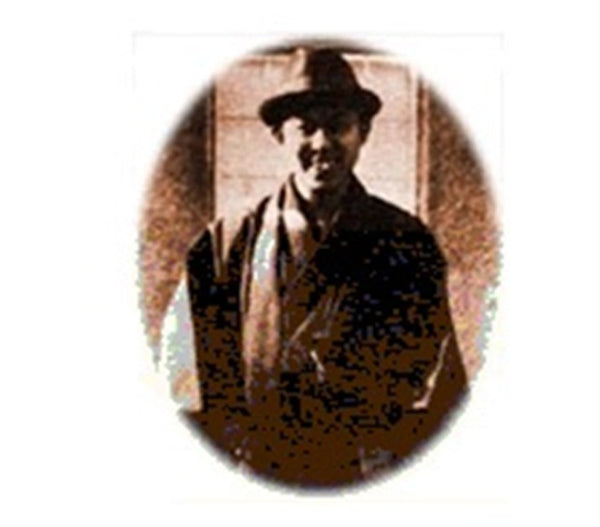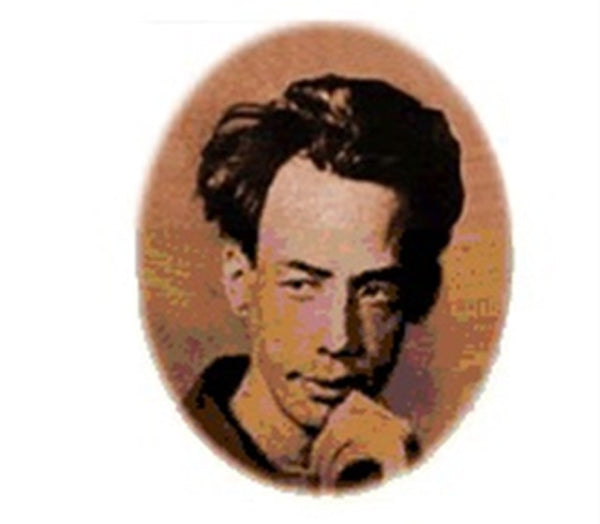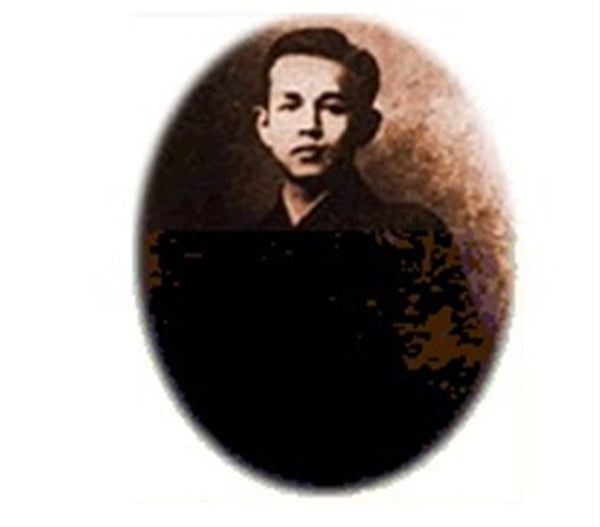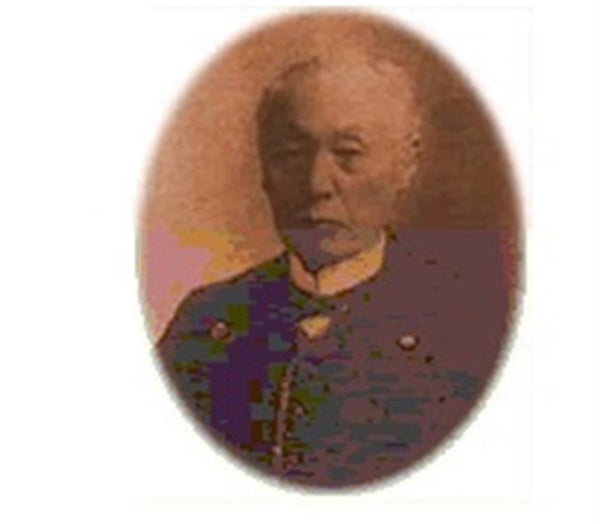Person related to person
 Junichirou Tanizaki
Junichirou Tanizaki


1886-1965
Born in Kakigara-cho, Tokyo. Presented "tattoo" at the second "Shinshicho" while studying at the University of Tokyo. I have been writing since then for more than half a century. His main books include "Swastika", "Shunkinsho", "Snow Snow", and "Key", and his essay includes "The Tale of Genji" modern translations.
[Born in downtown, raised in downtown]
"After that, I have been asked twice by a man who was certainly suspicious. Again, on the day of fair in Suitengu Shrine, during the daytime, I returned from school night and stopped by the Honke in Kakigara-cho, then went out to Ningyocho, and came to Shimizuya in the direction of Mihara-do. It was time. Someone came to me from the crowded crowds of stalls on one side and narrow roads, and said "Bochan" with a small catstroke that could not be heard ... "
This is a passage from the work of literary writer Junichirou Tanizaki at the age of 69, "Kids".
Speaking of Junichiro, there are many works set in the Kansai region, such as "Hosoyuki" and "Shunkinsho", so it is often associated with growing up in the Kansai region, but as depicted in this work, he was a fresh Tokyo kid, which was also a downtown kid born in Kakigara-cho, where merchants lined the eaves. 2-14 Kakigara-cho, Himotohashi-ku, Tokyo, this is where he was born and raised. The street name was changed after that, and the current 1-7-10 Nihonbashi Ningyocho, Chuo-ku corresponds to that.
[From kindergarten in Reigishijima to Sakamoto Elementary School]
Junichiro's father was Goro Kura and his mother was Seki. When he was born, his parents were alleging to Tanizaki Katsubunsho, run by his grandfather Hisaemon.
My grandfather is a good business owner, and he has a wide range of businesses such as rice brokers and Western liquor stores, and Junro was raised here as a big shop puppy.
At the time when kindergarten was rare, he also went to kindergarten on Reigishi Island.
In addition, I went to Sakamoto Elementary School in Sakamoto-cho. He has excellent grades, and when he is promoted in the second year, he has been selected as an honor student.
It seems that I especially liked the precincts of Suitengu as a place to play at that time.
However, when I went to elementary school, my family luck began to tilt. The business of a rice broker that his father started when Junichiro was four years old failed. The family moved to a small house in Minami Kayabacho, and his father decided to work as a salaried worker on the Kabuto-cho stock exchange.
[Leave Tokyo after the Great Kanto Earthquake]
After that, the house was only in poverty, and his father couldn't enter Junichiro into junior high school, so he wanted to go to service. However, helped by my uncle's help and the enthusiastic recommendations of my homeroom teacher, he was able to go to Tokyo Prefectural Daiichi Junior High School, now Hibiya High School.
After that, I went to Tokyo Imperial University. In the meantime, for five years, I have lived as a student and a tutor at the Kitamura family of Seiyoken, a Western restaurant located at 33 Tomicho, Kyobashi-ku.
It was after the Great Kanto Earthquake that Junro left Tokyo and moved to Kyoto.
It was his home in Yugawara in 1965 that died.
 Ryunosuke Akutagawa
Ryunosuke Akutagawa


1892-1927
Noveler. Born in Irifune-cho, Kyobashi-ku. He was adopted by his uncle due to his mother's mad, and after leaving the University of Tokyo, became a subordinate of Soseki Natsume and published "Shinshicho". He has authored many books such as "Nose", "Rashomon", "Moriko Spring", and "Spider's thread".
[I was born at 10th Akashicho, Chuo-ku]
"I'm a person who lived in headquarters each time from birth until around the age of 20," Ryunosuke wrote in a small item called "Honsho Ryogoku", but in fact, I was born Tsukiji Irifunecho, now Akashicho. To be precise, 10 Akashi-cho, Chuo-ku, and at that time, 8-1 Irifune-cho, Kyobashi-ku, Tokyo, was his birthplace. On March 1, 1892 (1892), it was named Ryunosuke after the birth of Tatsutsutsutsuku.
At the time of his birth, his father, Toshizo Niihara, ran a milk sales company, Komakisha. "Komakisha" was originally created by businessman Eiichi Shibusawa. At that time, he was worried about the sluggish Japanese pastoral industry, and in 1879, when he was paid off from Kanagawa Prefecture to Hakone Sengokuhara, he opened a ranch ranch farm and embarked on milk loss. It was Ryunosuke's father who worked there.
Toshizo, who had gained the trust of Shibusawa, became the sales manager in the Tokyo area in expanding its sales channels, and set up a head office in Tsukiji Irifunecho. This is the birthplace of Ryunosuke.
[Father's success, mother's illness]
Tsukiji Irifune-cho was a foreign settlement at that time, and until it was abolished in 1899, Japanese people were not allowed to live. However, Ryunosuke's father was an exception because he was doing business with foreign partners. Komakisha's business developed smoothly, and when Ryunosuke was born, Toshizo was the elder of the industry. Ryunosuke wrote the father who became a businessman as "one of the small successes" in the small item "Donkisho".
One day, however, my mother and Fuku suddenly became sick. It's been only seven months since Ryunosuke was born. It was October twenty-fifth. In the "Donkisho", he spells his mother with the statement "My mother was a madman."
[To my uncle's home in seven months after birth]
Due to the sudden onset of Fuku, Ryunosuke was seven months old and was taken by his mother's parents' home, the Akutagawa family. The location is 15 Koizumimachi, Honjo-ku, the current 3-22-11 Ryogoku, Sumida-ku. The Akutagawa family is a family that has served the palace as a monk for generations. In the Akutagawa family, he was raised by Fuku's brother and wife and Fuku's sister's blow.
In particular, the butterfly survived single life and took care of Ryunosuke on behalf of his mother. "If I hadn't had my aunt, I wouldn't know if I could have done it today," he said with compassion for the butterfly. The kindergarten went to the kindergarten attached to Koto Hirone Elementary School next to Kaikoin, and the elementary school entered Koto Hirone Elementary School, the predecessor of the current Ryogoku Elementary School. When he was 12 years old, he was officially adopted by the Akutagawa family.
Ryunosuke, a 36-year-old young man, committed suicide of sleeping pills at his home in Tabata, Tokyo, early in the morning of July 24, 1927.
 Takuboku Ishikawa
Takuboku Ishikawa


1886-1912
The poet and poet of Meiji. It grew up at Hotoku-ji Temple in Shibumin Village, Iwate. Later, he moved to Tokyo alone and worked as a proofreader for the Asahi Shimbun in Ginza. Until he died at the young age of 27, he was suffering from poverty and illness.
[Day to be remembered]
Takuboku seems to have been so happy about this job. That's because one year ago, he left his wife and children in Hakodate and moved to Tokyo alone to stop himself in a novel. Nevertheless, it was not going well, and at the same time, he was in a frustration, and at the same time he was in a difficult situation. For Takuboku at the time of restarting, employment must have been more encouraging than anything. It's written in his diary.
"Wednesday, February 24th, around seven o'clock on the night of the night, when I had a dinner while complaining about the late tata rice, a letter from Shinichi Sato of Asahi, and I opened it with a hand to open it, and I immediately returned to Kitahara, saying that I would not be able to enter the proofreader of the East Dynasty for more than 30 yen. This has laid the foundation for my life in Tokyo! The beer tonight, ten months after the dark, is marvelous."
It seems that joy will be transmitted.
[I fell ill for just two years]
At the time when he joined as a proofreader, the Asahi Shimbun had only a few employees, with 12 editorial departments, 13 political and economic departments, and 18 social departments. Even if we added a part-time novelist, the number of people gathered at the editorial office was less than 60. And out of the 12 editorial departments, 6 proofreaders are. One of them was Takuboku.
Takuboku has left several songs that describe the scenery of the workplace.
"The light of the newspaper in Takiyamamachi in Kyobashi" This is contained in the songbook "One Handful of Sand" published the year after joining the company, and is now engraved on his poetry monument in Ginza 6-chome, where the Tokyo Asahi Shimbun was once located. And there are other songs like this.
Takuboku, "Springly descends on the third floor brick building behind Ginza in the spring," was also assigned a responsible job as a winner of the Asahi Kadan, apart from the proofreader. There was hope in the future. However, he fell down with pulmonary tuberculosis a year, and finally became a person who did not return in 45 years.
Ramo also left the creation of poetry collections such as "a handful of sand" and "sad toys".
 Hisoka Maejima
Hisoka Maejima


1835-1919
Born in the house of clansman, Echigo Takada, studied medicine, English and navigation in Edo, and went to the Meiji government. First Secretary of the Ministry of Posts and Telecommunications. After inspections in Europe and the United States, we abolished the leap leg system and created a modern postal system in Nihonbashi, including ideas such as setting up stamps, post offices, and post boxes.
[Akebono of Modern Postal System]
Japan's modern postal system was born from Nihonbashi.
At the beginning of the Meiji era, Ekiji, the predecessor of the current Ministry of Posts and Telecommunications in Nihonbashi, and Yokkaichi Post Office, the predecessor of the current Tokyo Central Post Office, were established.
It was Maejima Mitsuru who made a great contribution to the introduction of the modern postal system.
He was the first secretary of the Ministry of Posts and Telecommunications of the Meiji New Government. At that time, he was the chief of the station.
"I was surprised at twenty letters."
There is a difference between heaven and earth in all respects between the modern postal system and the previous system. Prior to the introduction of this system, the delivery of letters relied on hiklegs. A flying leg carries a letter and carries it from the post office through the post office. As a result, the labor costs for the legs were quite high.
It was the first thing that surprised me when I became secretary.
One day, while I was reading the documents in the office of the secretary, a statement came out. It was a payment form to the hik for documents transmitted between Tokyo and Osaka. The crowd turned his eyes round at it. Because it was too expensive. It was a tremendous price for one flight, 20 to 30.
[Learn by visiting Europe and the United States]
At that time, he was ordered to inspect the postal system in Europe and the United States.
At that time, the new Meiji government was eager to introduce a new system in order to regain the delay caused by isolation. I was trying to adopt new systems in Europe and the United States more and more, and to catch up with Europe and the United States as soon as possible. To this end, the government has dispatched a large number of observers to Europe and the United States.
He was one of them.
In Europe and the United States, everything I saw was amazing. For example, it was a remarkable surprise for him to send a letter to the other party with just one stamp.
[From the hijacking era to the postage stamp era]
After returning from his visit to Europe and the United States, he immediately incorporated the system into our country.
There are no unusual things such as stamps, post offices, mailboxes, etc. now, but everything was revolutionary at that time.
For the first time, postal services were carried out between Tokyo and Osaka. It was March 1, 1871. Indeed, on this day, the times have made a great leap from the pilgrimage era to the postage stamp era.
By the way, U.K. was the first in the world to incorporate stamps into postal mail.
On the left, on the wall of Iriro in the northwest of Nihonbashi Post Office, there is a black marble explanation board engraved with "the birthplace of mail". In addition, there is a dense bronze bust on the back of the southwest. This bust was built in 1962 by the Nihonbashi-kai, Maejima-kai, and Nihonbashi Post Office Cooperation Association to commemorate the 90th anniversary of the start of the postal business.





